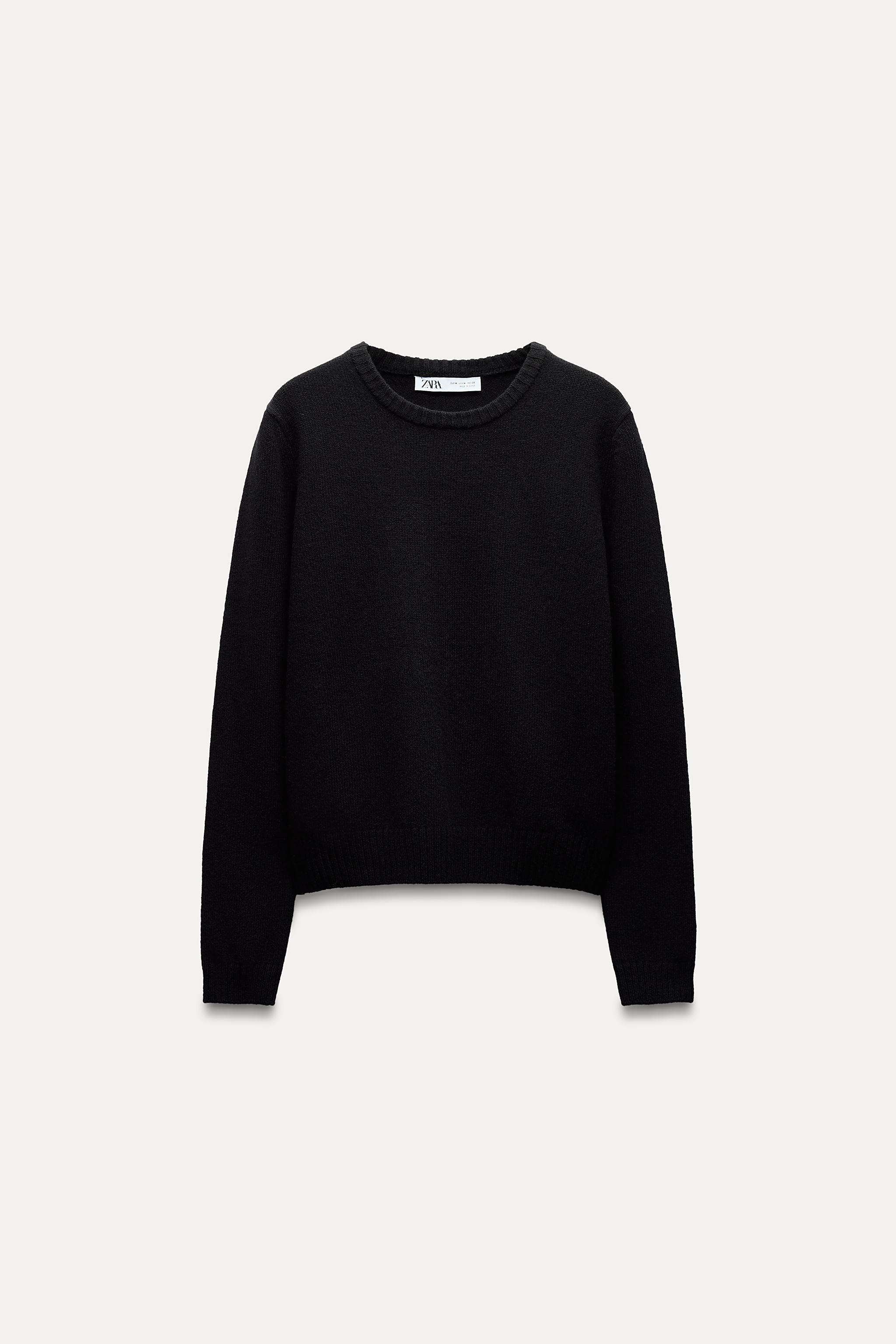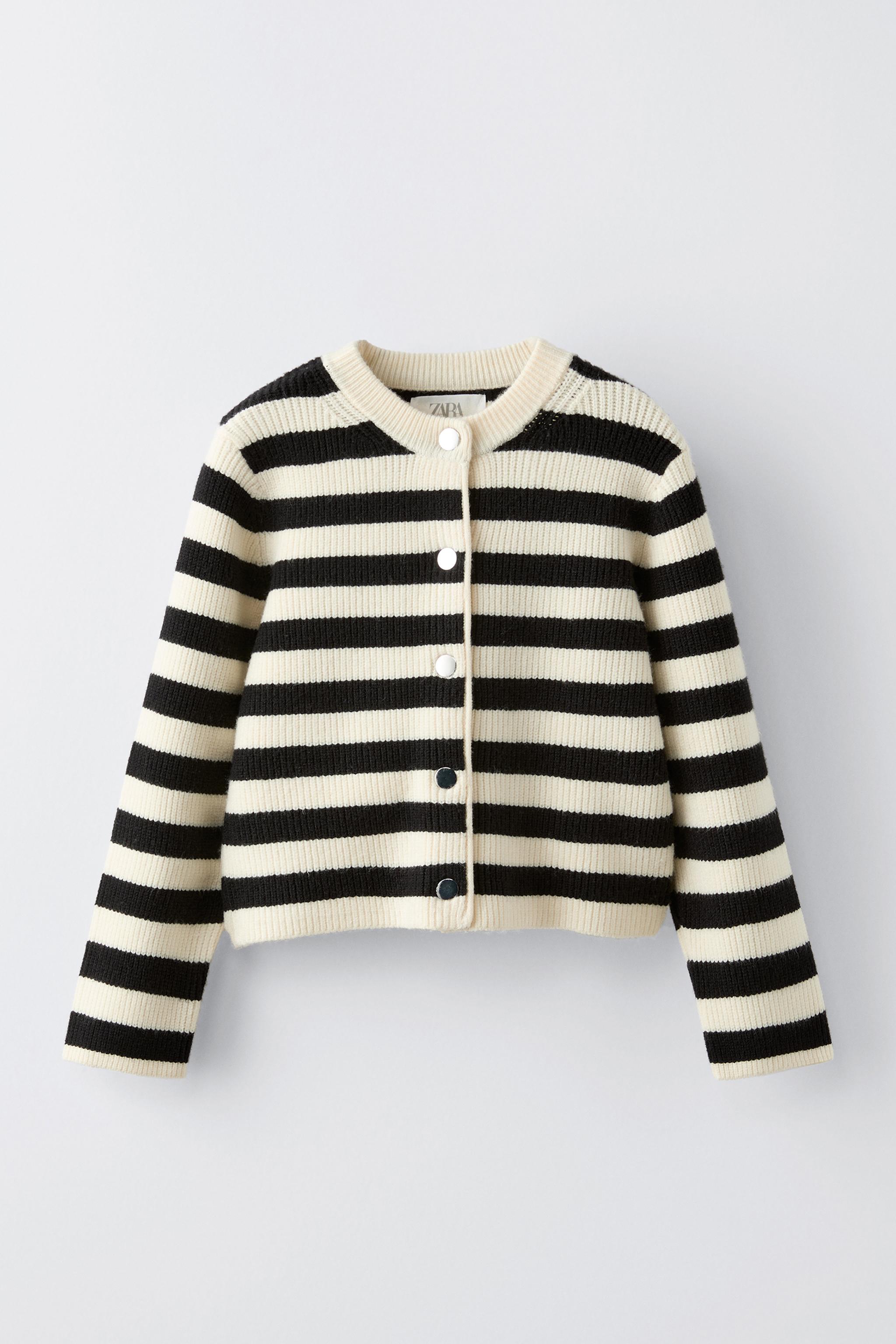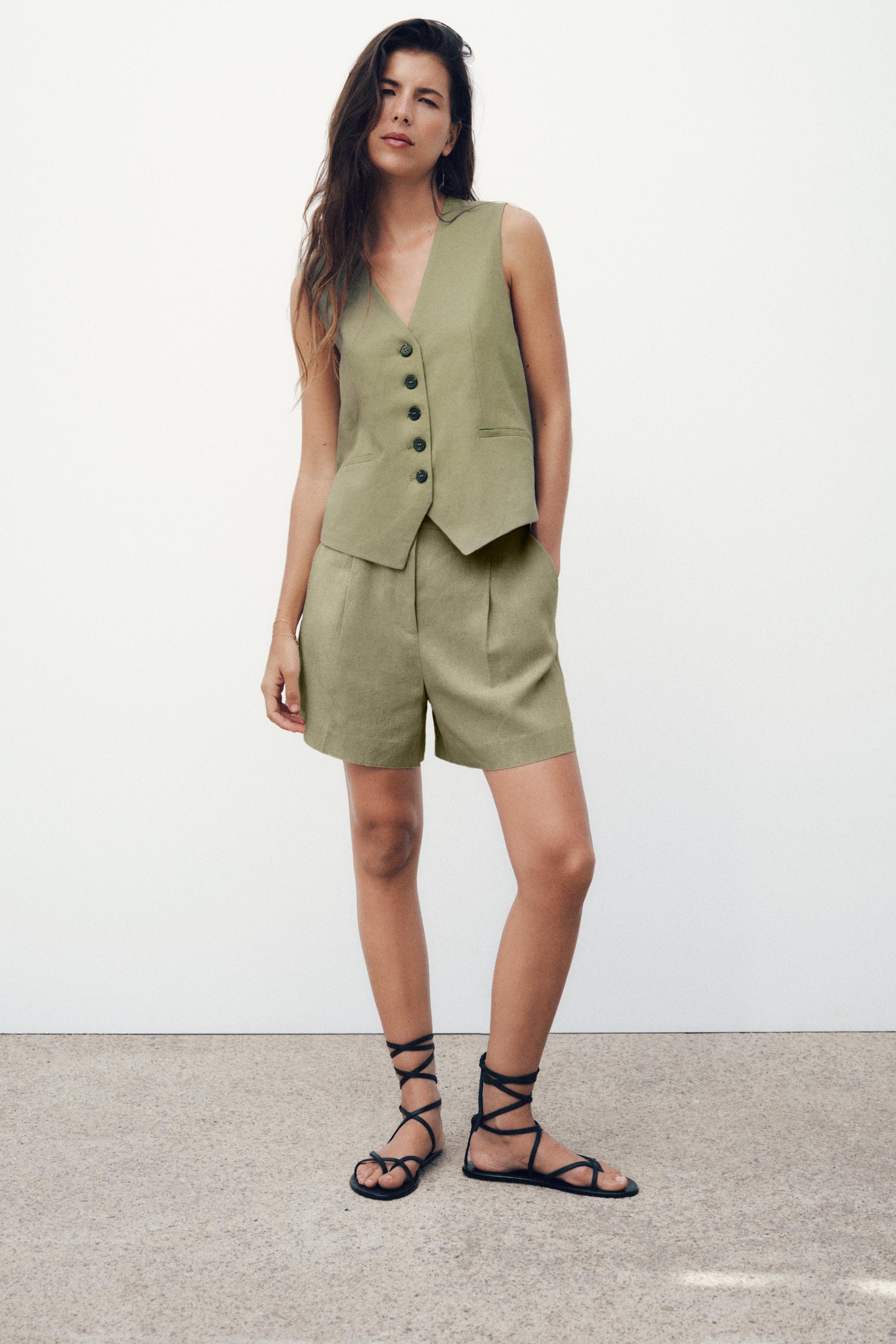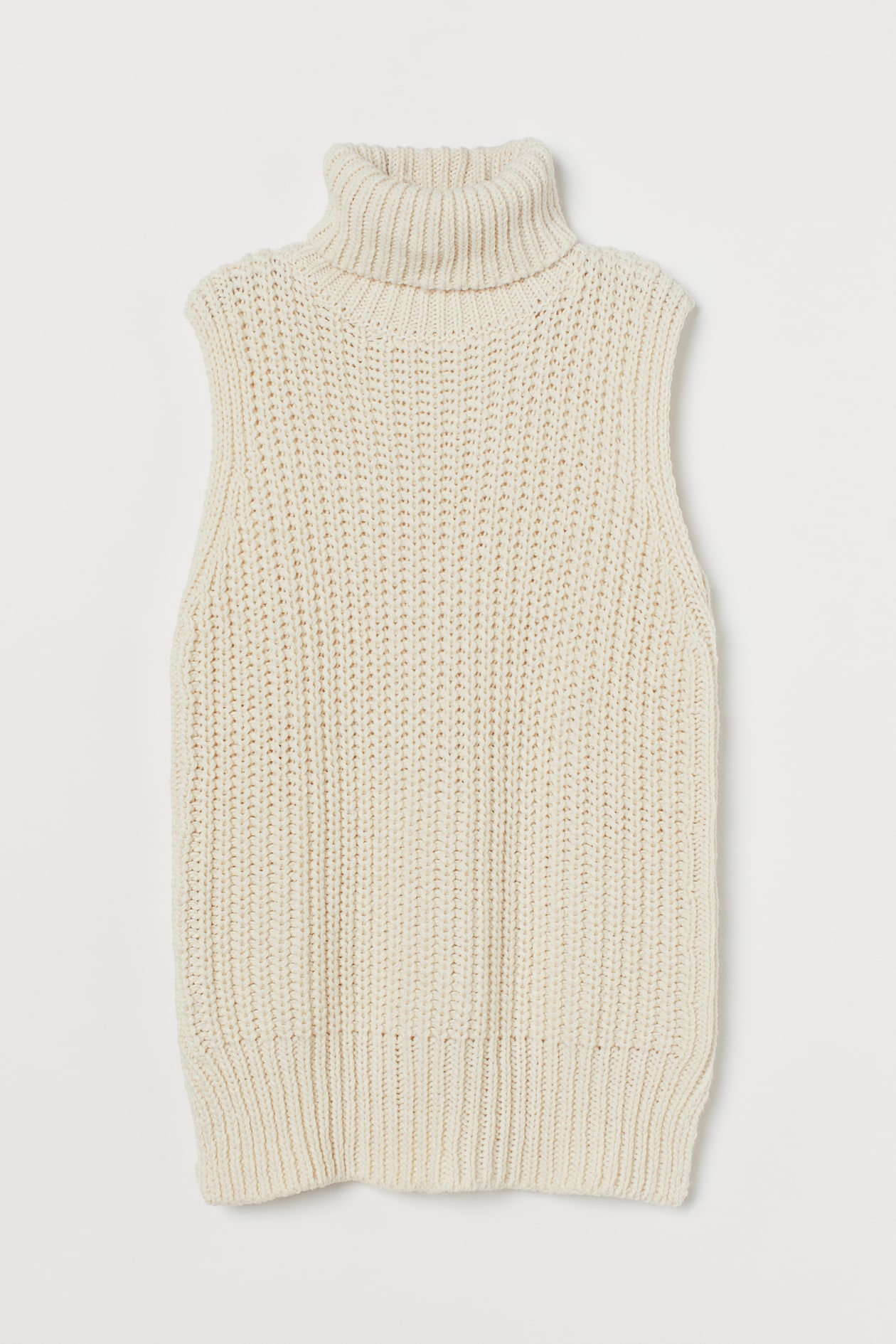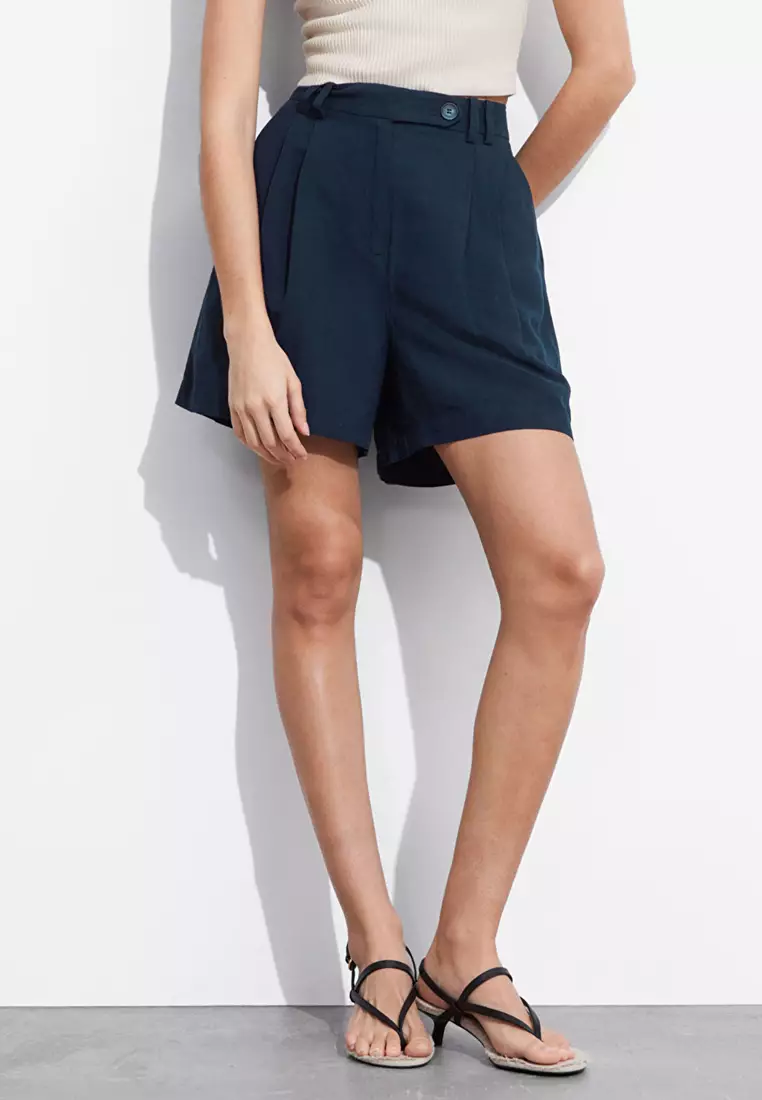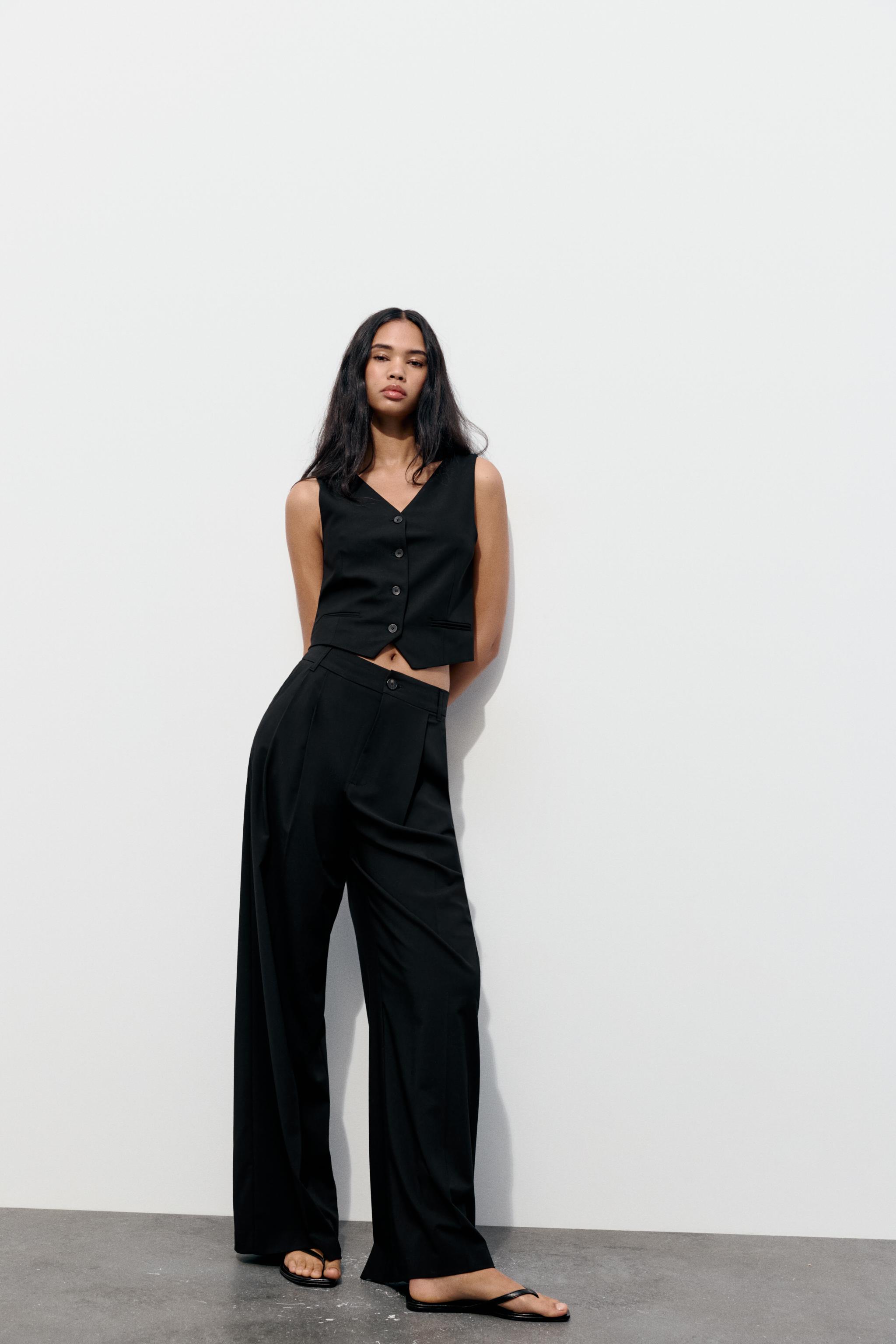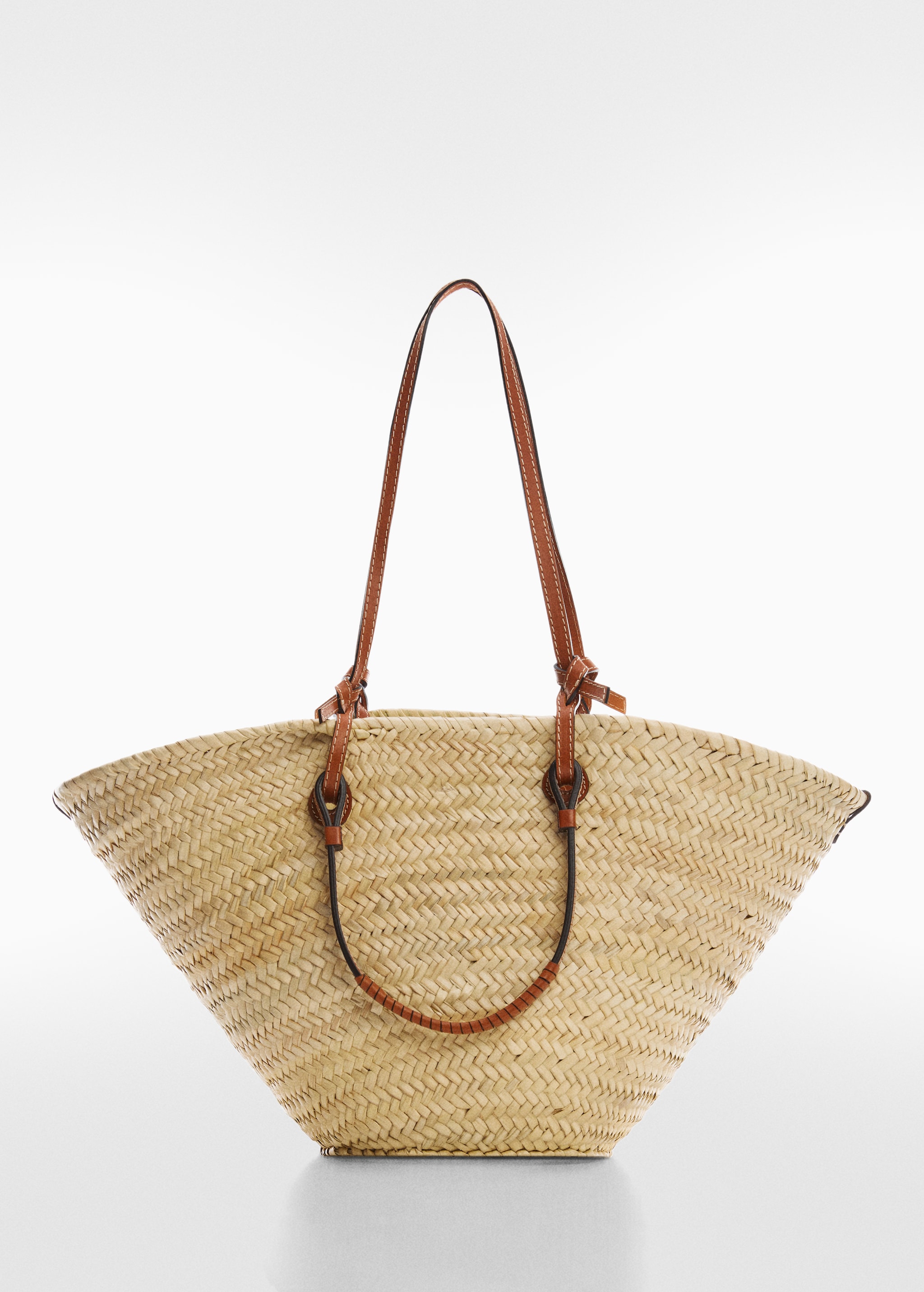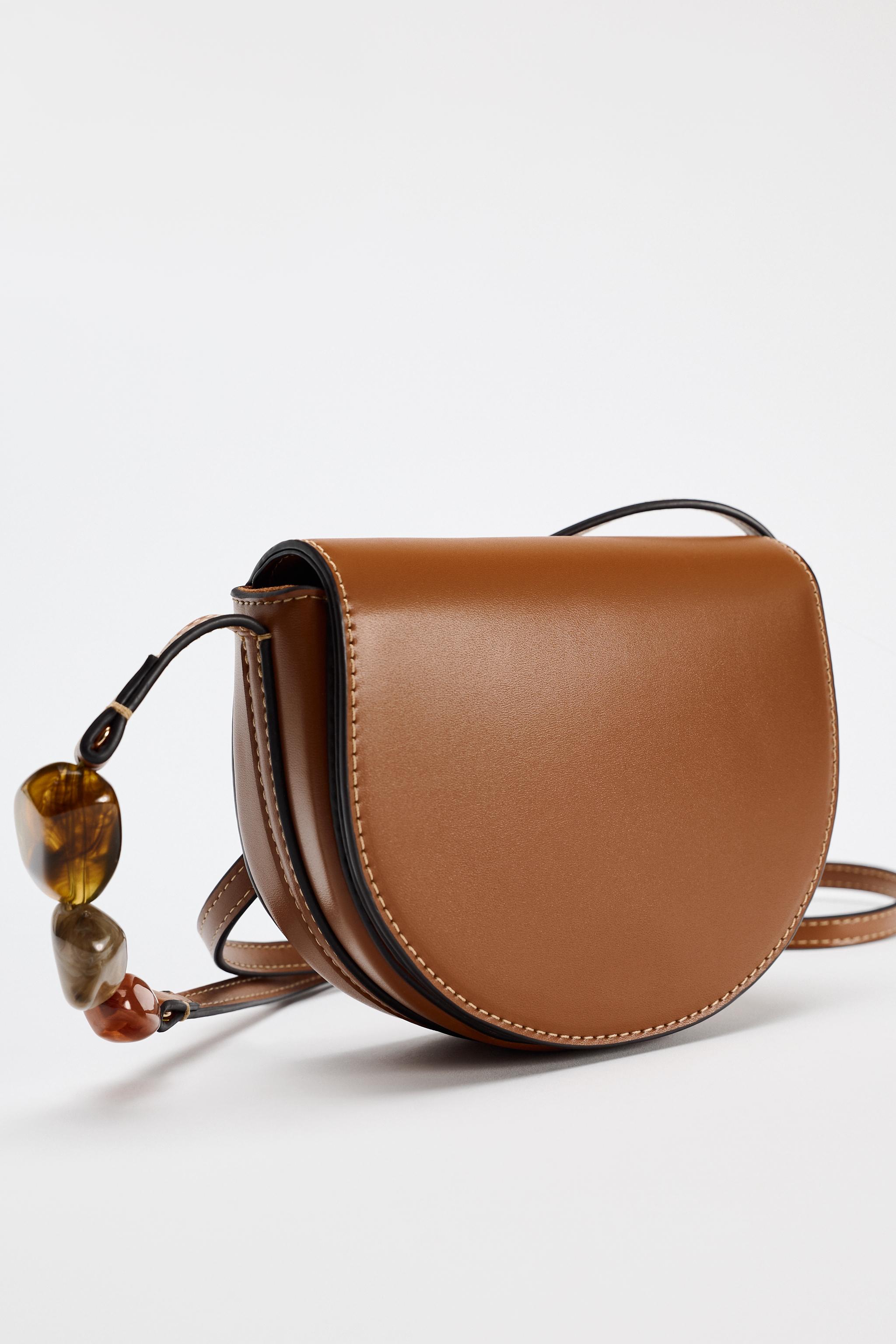Loafers have long been a wardrobe essential for women, but they’re a standout trend going into 2025—especially when styled with socks! Women aren’t just pairing loafers with socks; they’re experimenting with a variety of sock styles: black, white, striped, thin, thick, patterned, or knee-high—you name it!
From fashion icons to everyday trendsetters, everyone seems to be embracing the look of visible socks with their loafers for that extra touch of style. The most popular choices? Classic penny loafers and trending lug-sole loafers, both with socks that make a statement. Today, I’ll walk you through 15 pairs of perfect socks to pair with loafers, styling ideas for each, and tips to complete your outfit.
OVER THE KNEE SOCKS

For a modern twist on the classic prep school vibe, try pairing over-the-knee, thinner tall socks with loafers. Amp up this look by adding a crisp button-down shirt, a miniskirt, and polished penny or tassel loafers for a timeless, sophisticated edge.
Or, take your little black dress up a notch by pairing it with over-the-knee socks and loafers in black or white. For winter, thicker cozy tall socks are perfect with a sweater dress and either lug-sole or simple loafers for warmth and style.
There’s something undeniably playful about over-the-knee socks with shorter skirts and mini dresses—it adds a certain je-ne-sais-quoi that makes the outfit stand out.
Patterened Socks
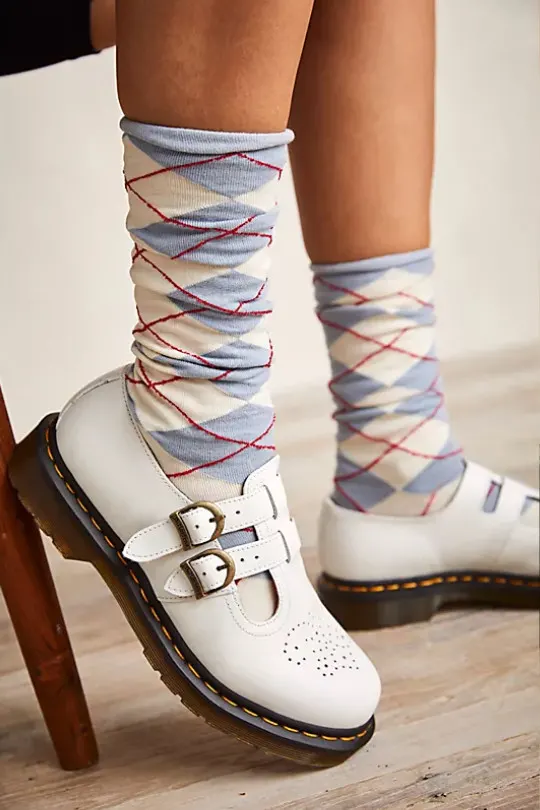
All-over patterns like plaid, polka dots, hearts, argyle, or other geometric designs are timeless and add a fun, quirky touch to any outfit paired with loafers. To keep it simple, try a minimal outfit with polka dot socks, or go bold by mixing contrasting prints for an eye-catching look.
If your socks are colorful, try matching one of their shades to your outfit for a coordinated effect. Opt for socks with embroidered or textured details to bring even more character to your loafers and complete the quirky vibe.
Knee Socks
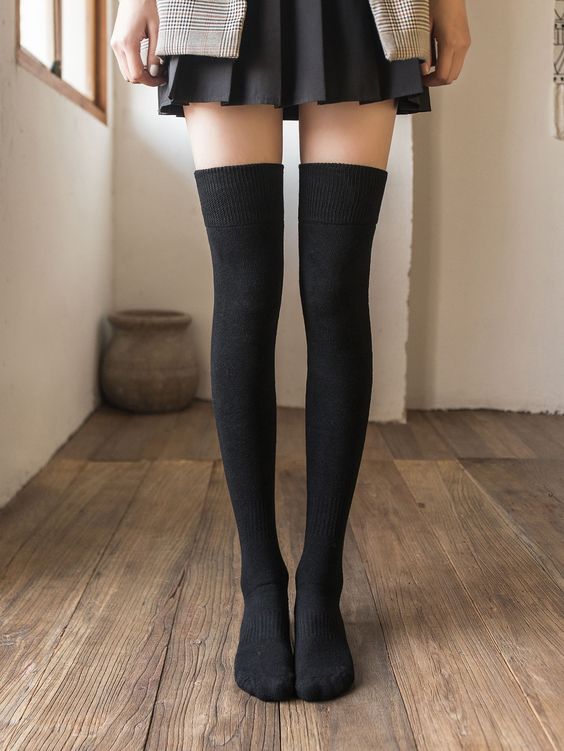
If white ankle socks give your loafers a hint of private school prep, knee socks take it to the next level! Try dark knee socks to contrast with beige or white loafers, or go for a tonal look by matching the socks to your shoes.
For a bit more flair, opt for patterned or sparkly knee socks to elevate your outfit. When it gets chilly, switch to cable-knit or fleece-lined knee socks for extra warmth in fall and winter. And for a playful twist, choose knee-highs with a scalloped top edge—they’ll add just the right touch of charm to your look.
Wooly Socks
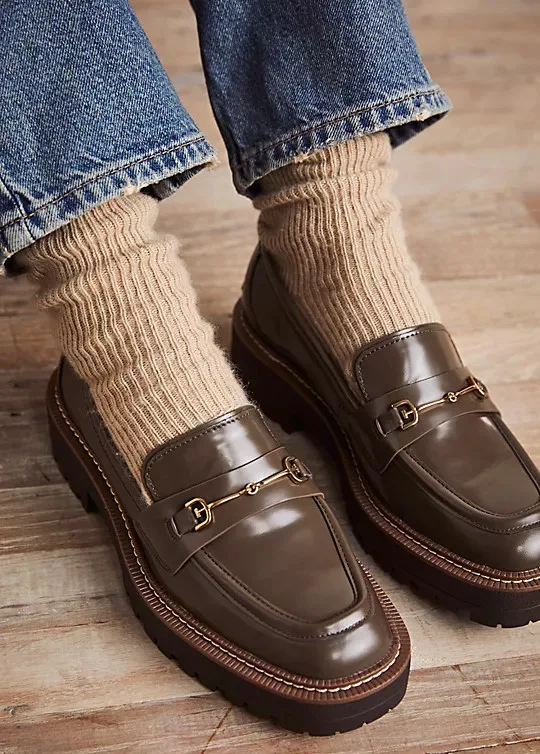
Nothing says cozy like a pair of thick, woolly knit socks with loafers during the fall and winter months. Beyond comfort, fuzzy or cable-knit socks add a warm, inviting feel to any outfit.
Try pairing soft, woolly calf-height socks with cuffed straight-leg jeans for a casual vibe, or style them with a mini dress and cardigan, finished off with chunky loafers.
For extra warmth, woolly over-the-knee socks are perfect with loafers on chilly days—wear them over bare legs or layered over stockings for added coziness.
Black Socks
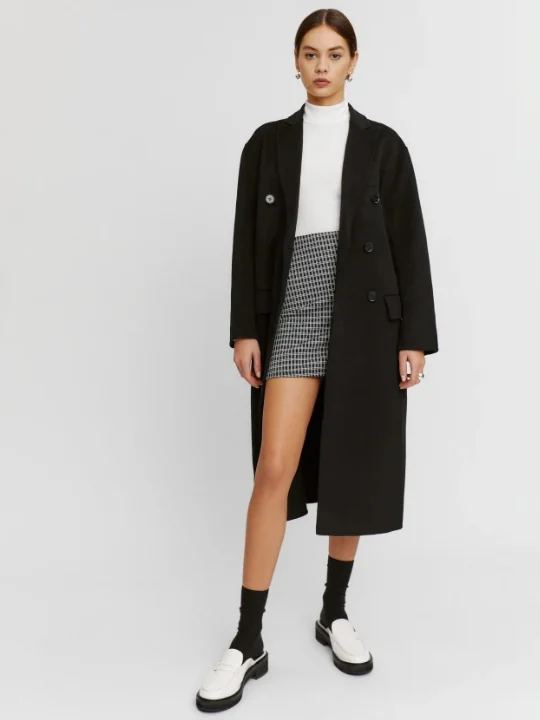
Black socks are a versatile choice that pairs well with any color or style of loafers, making them especially chic with black, white, tan, or even pink loafers.
For different looks, go with thin black ankle socks, thicker black crew socks, or calf-height dress socks slouched at the ankle. In cooler months, a thicker wool pair adds warmth, while in summer, moisture-wicking active or cotton socks keep you comfortable and stylish.
Striped Socks
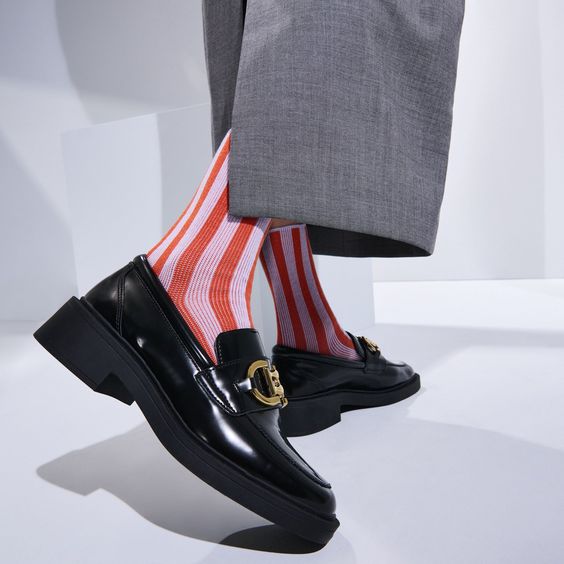
Striped socks—whether vertical or horizontal, dressy or athletic—are fantastic for pairing with loafers and adding a pop of color to any outfit. While men often style them with suits or jeans, women can absolutely rock this look too!
For a polished yet playful outfit, try tailored shorts, a tux shirt, colorful striped socks, and pointed-toe penny loafers. Or, go for a sporty vibe with black-and-white striped socks and bright white loafers, pairing them with jean shorts and a simple white tee or crisp shirt for a fresh, modern look.
Lace Socks
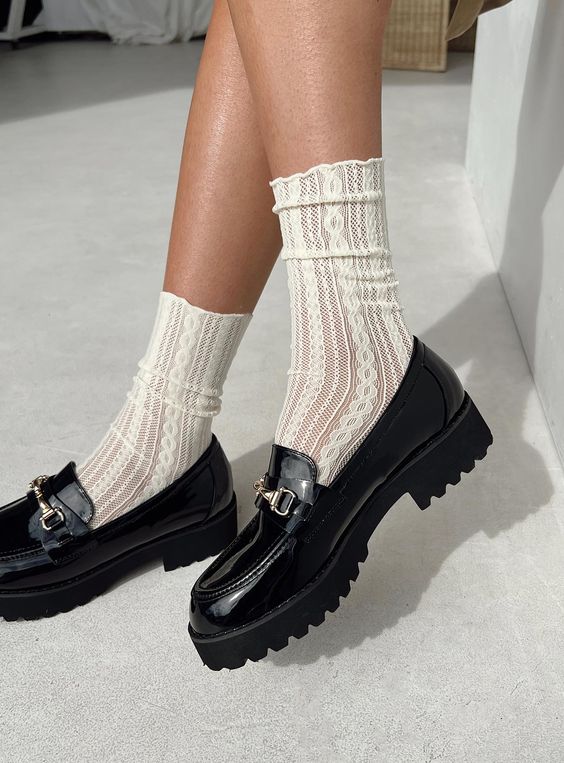
If you’re looking for a feminine sock with a touch of edge, lace socks paired with loafers are a perfect choice! Available in various colors, heights, and patterns—some with scalloped or ruffled edges—lace socks offer a unique style twist.
They create a delightful surprise when peeking out from under long jeans, adding a hint of romanticism to your look. For a more daring approach, roll up your pant hem to showcase your lace socks and make them a standout feature of your outfit.
Monogram Socks
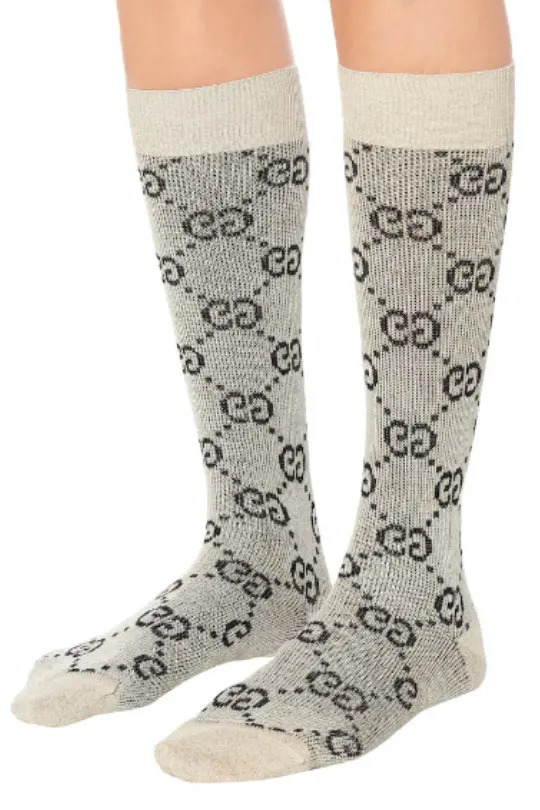
For a socks-and-loafers look that channels menswear styling, consider logo socks. If you’re a fan of designer accessories, all-over monogram ankle or knee socks are a chic option.
With repeated designer logos throughout, these socks are sure to draw attention to your loafers! If a full-on monogram feels too bold, opt for socks with a simple accent logo, like those from Gucci or Balenciaga.
To keep your monogram socks looking stylish, match them to the tones of your outfit. Show them off with shorter hemlines or let them peek through ankle-length pants and midi dresses. You can style them pulled all the way up for a polished look or let them slouch slightly for a more relaxed vibe.
Sheer Socks
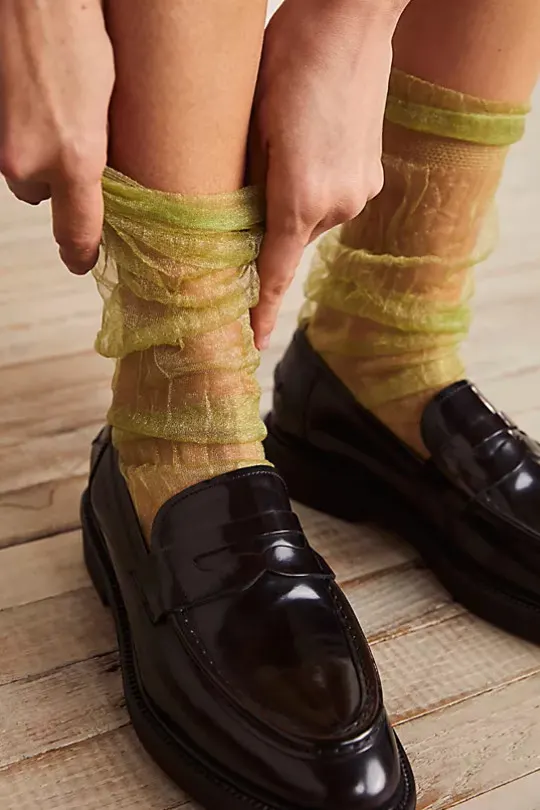
If fishnet socks feel a bit too daring for your style, consider opting for sheer socks as a softer, flirtier alternative to pair with loafers.
Tight black sheer ankle or calf socks are an excellent match for loafers, whether worn with ankle-length pants or pantsuits. For added interest, choose socks with subtle patterns, like minimal polka dots or larger designs.
For a summer look with a cute dress, try pastel or beige sheer loose tulle socks. To take it up a notch, go for quirky patterned sheer socks, such as polka dots or embroidered floral tulle options with sequins, to really elevate your outfit.
Ruffled Socks & Bobby Socks
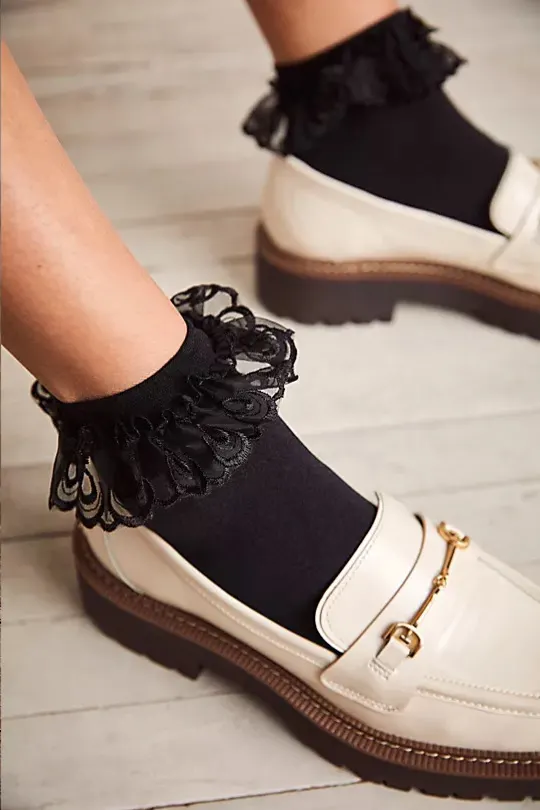
Are you looking to channel some retro vibes in your fashion? Ruffled or frill socks, also known as bobbysocks, are perfect for achieving a nostalgic 50s look or a girly aesthetic.
You can find ruffled socks in bold styles with lace or more subtle options with a lettuce-edge finish, like those from UGG or the lightweight ruffle socks from Free People, available in various colors. Pairing frilly socks with penny loafers adds a youthful touch to a simple jeans-and-T-shirt outfit.
For a casual look, wear a floral sundress with bobbysocks and saddle or chunky loafers. Alternatively, style your ruffled socks with loafers and cuffed boyfriend jeans for a laid-back yet chic ensemble.
Contrast Color Socks

This is the perfect opportunity to inject a pop of bright color or neutral contrasting tones into your loafers. I love the idea of color-blocking simple loafers with the trendiest shades of the moment, like lime green, hot pink, or blush.
For an edgy look, wear a fitted black dress with black lug-sole loafers and white socks. Alternatively, try a floral midi dress with dainty tan loafers and playful pink socks. I’ve also noticed some stylish ladies wearing colorful socks over tights, which is a fun trend to experiment with!
To really showcase your contrasting socks, opt for shorter hemlines or a monochromatic suit. Pairing white or black socks with loafers can add a fun element to black-and-white outfits, making for a chic and stylish ensemble.
White Cotton Ankle Socks

Simple white ankle socks are a go-to choice for loafers, effortlessly conveying a private school uniform vibe. Dainty yet stylish, they complement both black and colored loafers beautifully.
For a chic look, pair them with cuffed or cropped straight-leg jeans and a cropped sweater vest over a crisp white shirt. Alternatively, style them with black chunky loafers and an all-black mini dress or skirt suit for an appealing contrast. I especially love the combination of white ankle socks with black-and-white outfits for a timeless and fashionable ensemble.
Fishnet Ankle Socks
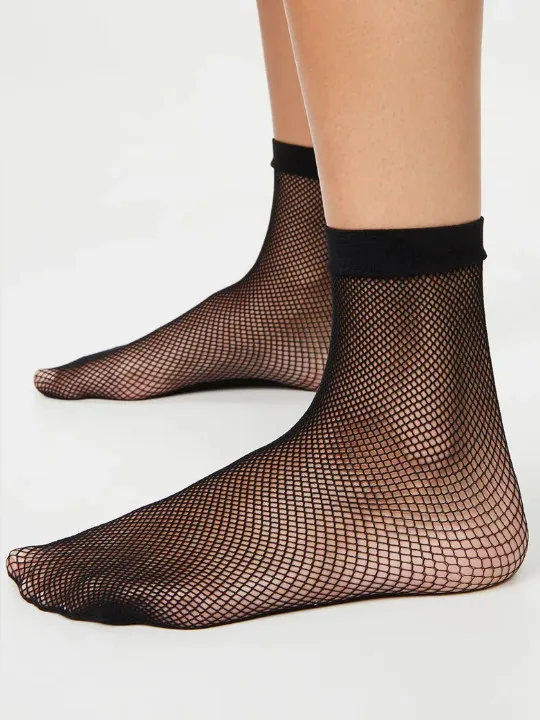
Finding the right socks to wear with your loafers in the summer can be a challenge, but mesh or fishnet socks are perfect for achieving a stylish street-style look during those hotter months or transitional seasons.
These types of socks provide the illusion of wearing socks without the bulk or heavy coverage. I love matching them to the color of your loafers or choosing shades that are very close in tone for a cohesive look.
For a simple yet fashionable outfit, try pairing mesh socks with heeled or flat loafers and cropped wide-leg jeans. They also work well with a pantsuit, adding a touch of rock ‘n’ roll edge to your ensemble.
No Show Socks
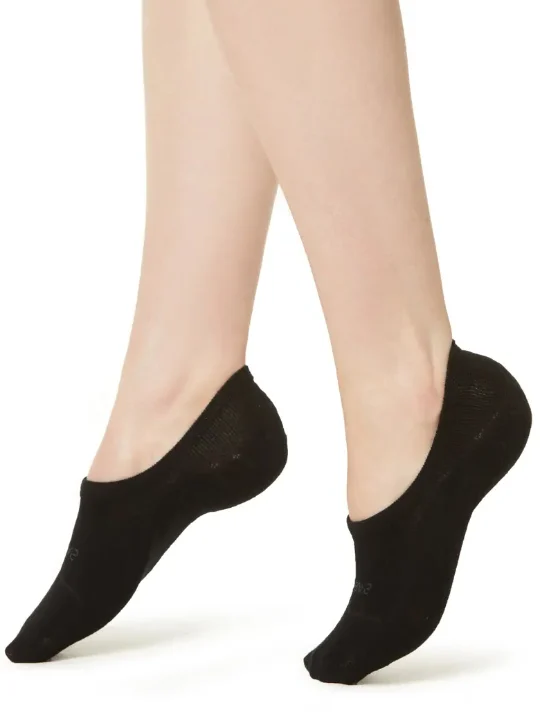
No-show socks are the ideal low-profile option designed to be invisible when worn with loafers, making them perfect for maintaining the aesthetic of your outfit. They’re especially great for sleeker, single-soled, low-profile, or daintier loafers.
However, it’s best to avoid wearing no-show socks with women’s slingbacks or loafer mules, as they can be visible at the back, which defeats their purpose. Instead, opt for ankle socks or crew socks for a more polished look.
When choosing no-show socks, material is key. Look for cotton or cotton blend options, as cotton is a breathable, natural fiber that effectively absorbs moisture, enhancing comfort when wearing loafers.
Fit is equally important; the right no-show socks should fit snugly around the ankles and arch to prevent slipping and bunching up inside the shoe. Be sure to select a sock color that closely matches your loafers or one that complements your skin tone for a seamless finish.
Basic Crew Socks
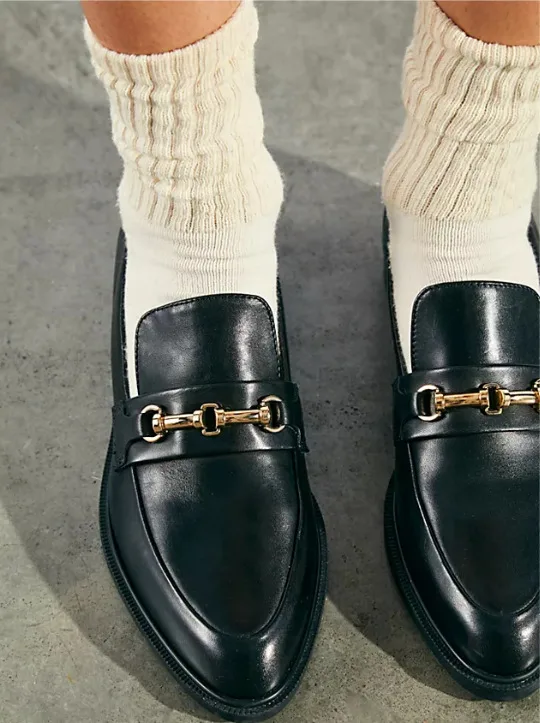
White or black crew socks can effortlessly elevate your outfit when styled correctly! Also known as tennis socks or tube socks, these thicker, ribbed styles rise over the ankle and offer a sporty touch to your look.
Currently, crew socks are incredibly fashionable and can be styled in various ways: you can pull them all the way up for a polished appearance or slouch them down for a relaxed, off-duty vibe.
While they often come in classic white, crew socks are also available in black and a range of colorful options featuring contrast logos, like the iconic Nike Swoosh or Adidas trefoil.
High-fashion brands such as Alexander McQueen, Balenciaga, Burberry, and Versace are embracing the logo crew sock trend, adding a luxe flair to this sporty staple. Whether you’re dressing down or aiming for a chic look, crew socks are a versatile choice that can complement your loafers beautifully.
CONCLUSION
I hope this post has inspired you to embrace the loafer trend and experiment with different sock styles! Wearing socks with loafers is a fantastic way to stay warm and stylish during the cooler months, but they can also make a bold fashion statement in the spring and summer. Socks not only enhance your look but also help keep your feet dry in everyday loafers, making stiffer styles more comfortable to wear. So go ahead and have fun mixing and matching—your loafers and socks can be the perfect duo for any season!






